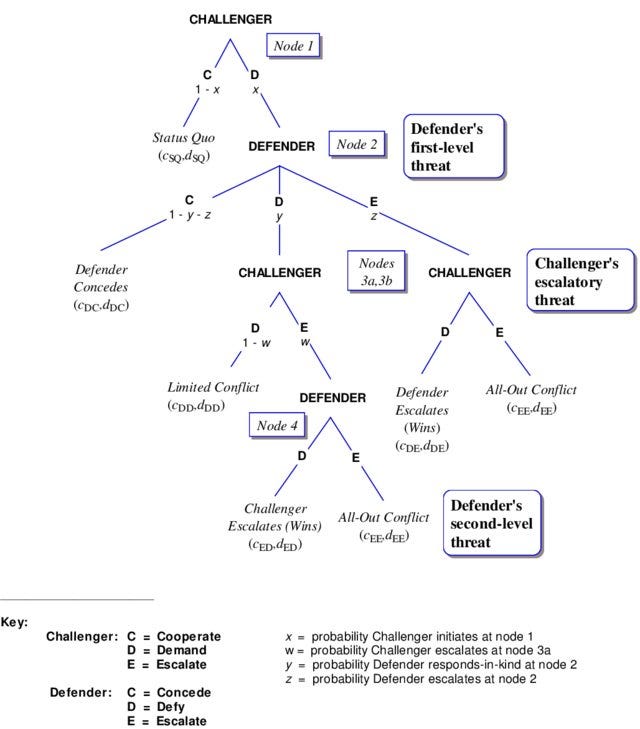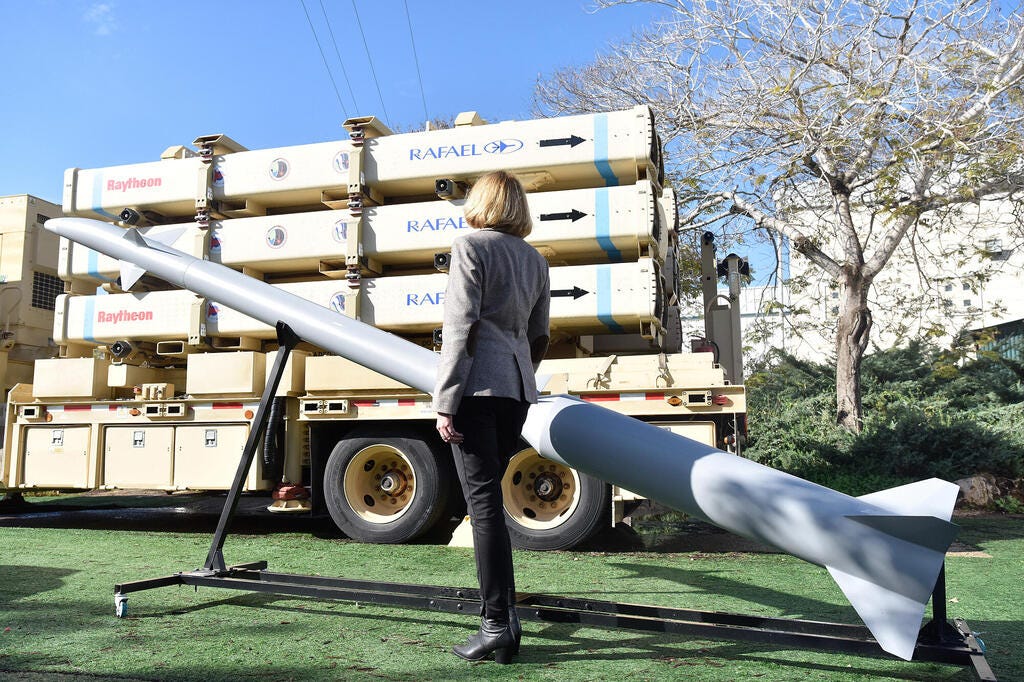Iran's Strikes on Israel: A Pyrrhic Victory for Tehran?
The concept of a "Pyrrhic victory" derived from the costly battles fought by King Pyrrhus of Epirus1 against Rome, epitomizes the idea of winning at such a devastating cost that it mirrors defeat. During the Pyrrhic War, particularly at the battles of Heraclea in 280 BC and Asculum in 279 BC, Pyrrhus’ army inflicted heavy losses on the Romans but at a great cost to his own forces. Despite his victories, the depletion of his troops and resources led Pyrrhus to purportedly comment that another such victory would "undo him," highlighting the unsustainable toll of his conquests. This concept finds its relevance in contemporary geopolitical conflicts, where the disproportionate costs of military engagements often overshadow their tactical or strategic gains. A modern exemplar of this is seen in the 2024 Iranian missile strike on Israel2. While the attack was defended successfully3, it came with substantial financial and political costs, thus posing the question: Was this a Pyrrhic victory for Tehran? The modern theater of war demands not only battlefield success but also prudent management of the economic and human costs associated with such victories, challenging nations to balance immediate gains against long-term sustainability, similar scenario could be hypothesized in the case of the ongoing Russo-Ukraine war.
The Financial Asymmetry of Defense: A Detailed Analysis
On the night of April 13, 2024, Iran initiated a major offensive against Israel involving drones, cruise missiles, and ballistic missiles, employing resources costing between $80 million to $100 million. In contrast, the defensive response by Israel, involving sophisticated systems like the Iron Dome, David's Sling, and the Arrow systems, was significantly more costly, estimated as high as $1 billion some analysts4 estimate, however, I believe this could be an overestimation. This financial contrast highlights a key aspect of modern warfare: the economic strain of defense can outweigh the immediate tactical costs of an attack. The concept of financial asymmetry is not new in military history. During the Battle of Bunker Hill (1775), the British forces captured the Boston peninsula but at a great cost, prompting a reevaluation of their military tactics against the American revolutionaries. Similarly, during World War II, the Japanese forces achieved a tactical victory at the Battle of the Santa Cruz Islands but suffered substantial losses in veteran aircrews, which had long-term strategic repercussions. These examples echo the situation faced by Israel in 2024, where the financial burden of activating high-cost defense systems against a relatively cheaper offensive posed questions about sustainability and strategic prudence.
Cost Analysis of Missile Defense
The defense systems employed by Israel are among the most advanced in the world. However, the cost of intercepting incoming threats can vary dramatically and this is because threats require different interception methods and technologies. The technology behind each missile defense system is complex and varies in sophistication. Systems designed to intercept high-altitude, long-range missiles typically involve more advanced technology and thus are more costly. This includes radar capabilities, the missile's propulsion system, and the guidance technology used to hit the incoming threat. The cost of an interception can also depend on the operational context, such as the distance at which the interception occurs, the density of the attack, and the geographical area being defended. Interceptions in remote or densely populated urban areas might require different responses and entail different costs. Some estimates of the costs based on averages are as follows.
Iron Dome: The Iron Dome5 is primarily designed to intercept short-range rockets and artillery shells. It's particularly effective against projectiles that would land in populated areas, providing a shield that minimizes civilian casualties and property damage. The cost for each interception made by the Iron Dome system is estimated between $40,000 to $100,000. This range can vary based on the specific scenario, such as the type of projectile intercepted and operational circumstances.
David's Sling: David's Sling6 is designed to deal with medium to long-range missiles and larger unmanned aerial vehicles (UAVs). It fills the gap between the Iron Dome and Arrow systems, targeting threats that include tactical ballistic missiles, medium- to long-range rockets, and cruise missiles. Each interception by David's Sling is considerably more expensive, estimated in the range of $1 million to $2 million.
Arrow Systems: The Arrow defense system (including Arrow 2 and Arrow 3 variants) is intended to intercept ballistic missiles outside the earth's atmosphere. It represents the highest tier of Israel's missile defense architecture, dealing with long-range threats, including intercontinental ballistic missiles (ICBMs). Interceptions made by the Arrow system are the most costly, ranging from several million dollars per engagement. Each Arrow interception can cost approximately $2 million to $3 million.
Considering the scenario on 13 April 2024, where Iran launched an attack involving 170 drones, 30 cruise missiles, and 120 ballistic missiles, we can calculate the potential costs based on the defenses employed:
Iron Dome Interceptions:
Targets: 170 drones
Cost per Interception: $70,000 (average)
Total Cost: 170 drones x $70,000 = $11.9 million
David's Sling Interceptions:
Targets: 30 cruise missiles
Cost per Interception: $1.5 million (average)
Total Cost: 30 missiles x $1.5 million = $45 million
Arrow System Interceptions:
Targets: 120 ballistic missiles
Cost per Interception: $2.5 million (average)
Total Cost: 120 missiles x $2.5 million = $300 million
Additional Contributions:
US and UK Defense Contributions:
Estimated Additional Interceptions: 50 (RAF Typhoons deployed via Akrotiri7)
Arrow System Cost: 30 x $2.5 million = $75 million
David’s Sling Cost: 20 x $1.5 million = $30 million
Total Contribution Costs: $105 million
Overall Defense Costs:
The combined defense efforts using Israeli systems amounted to around $356.9 million. When adding the contributions from the US and UK, which included advanced systems similar to Arrow and David's Sling, the overall defense cost totaled around $461.9 million. This does not include costs of payroll, fuel and maintenance which could go as far up as $500+ million, not far off other estimates analysts have given.
For Israel, the need to maintain a technological edge in missile defense is crucial given its geopolitical situation. However, the financial sustainability of such a defense posture is challenging, especially under, possibly, more frequent or large-scale attacks. From a strategic viewpoint, the disproportionate cost of defense for Israel and its allies might seem to favor Iranian tactics initially but this does not take into account the broader implications such as international diplomatic responses, potential escalations in the conflict, and the internal political and economic pressures that Iran faces. The strikes may have intended to showcase Iran's military prowess and resolve but doing so at such a high cost with relatively low damage inflicted might undermine its position rather than strengthen it.
https://penelope.uchicago.edu/Thayer/E/Roman/Texts/Plutarch/Lives/Pyrrhus*.html
https://www.washingtonpost.com/world/2024/04/14/mapping-wide-scale-iranian-drone-missile-attacks/
https://thehill.com/policy/defense/4592716-israel-says-most-of-iranian-missiles-intercepted/
https://www.reuters.com/world/middle-east/any-air-war-israels-defences-would-trump-irans-high-cost-2024-04-18/
https://www.army-technology.com/projects/iron-dome/
https://missilethreat.csis.org/defsys/davids-sling/
https://cyprus-mail.com/2024/04/14/british-aircraft-dispatched-from-akrotiri-after-iran-launches-attack-against-israel/






